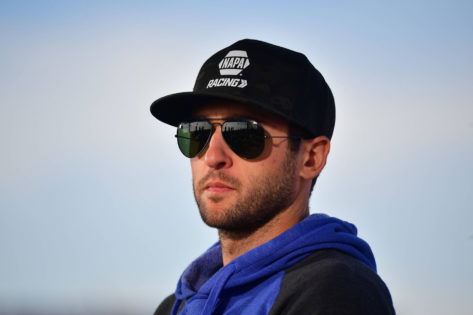Last fall at Talladega, Chase Elliott found himself trapped in a nightmare. As playoff hopes hung in the balance, Elliott watched helplessly as 28 cars tangled into a chaotic mess—the largest wreck in Talladega’s history. Drivers sat stranded in their damaged vehicles, unable to move, while confusion ruled the track. For Elliott and many others, what happened after the crash was just as frustrating as the wreck itself, creating a moment that would stick with them long after the race ended.
This was the final race where a wild card win for either Elliott or Chase Briscoe would’ve seen them through to the next round, but instead, they found themselves mired in a crash. What happened after the crash became a talking point. Back then, the DVP rules were a bit sketchy, and only Elliott and Briscoe were towed back to their pit stalls for the repairs and new tires.
It was unorganized chaos, with multiple cars and drivers stranded on the racetrack. Although Elliott was among the few lucky ones allowed to continue that race, even he admits that NASCAR had no idea how to deal with the situation. It’s not usual for 28 cars to get involved in a crash, but what was the situation like last year?
Chase Elliott Calls Out Post-Wreck Confusion
“We looked like a bunch of clowns,” Elliott recently admitted when Fox’s Bob Pockrass asked about the incident. “I wish someone could have been sitting in my seat in the fall. It was epic. There was 10 of us sitting down there in the grass. And we’re all arguing, pleading our case, yelling, and screaming. Just silly.” His candid description reveals the chaos that unfolded as drivers competed for attention from overwhelmed track workers.
The scene was perfectly captured in the No. 9 team radio communications. “Is everybody just sitting back there in their car waiting to get moved?” Spotter Trey Poole asked during the confusion. Elliott’s frustrated reply told the whole story: “Yeah. Everybody’s just spinning their wheels, turning in circles, can’t go anywhere. Stuck in the grass. Stuck on the asphalt.” With so many damaged cars, track workers struggled to coordinate recovery efforts, leaving drivers stranded and increasingly frustrated.
NASCAR’s Damage Vehicle Policy was at the center of the controversy, and fortunately, they’ve made important tweaks to the new rule. Now, the cars with four flat tires will be towed back to the pit stalls, whereas those needing significant repairs will head to the garage area. There’s no time restriction here, as teams can do the repair work and get the cars rolling back on track. The only catch is that the car needs to meet a minimum speed after leaving the garage, and it’s a one-time deal.
Chase Elliott said they looked like clowns last October at Talladega with no one really knowing who would get towed where as they all argued and pleaded their case. At least they know this year they will tow drivers to a work area in the garage. @NASCARONFOX pic.twitter.com/T3AIucUqzN
— Bob Pockrass (@bobpockrass) April 27, 2025
In essence, NASCAR is now incentivizing drivers to have a chance to at least return to the racetrack. And Elliott feels that NASCAR has made a sensible decision with the new DVP rules. “I think at that point in the season, they were just trying to figure out what direction to go with it and how to navigate that. At least there seems like there’s a better direction from the tower as to what the track workers are supposed to do now.”
Although Kyle Busch had some trouble understanding the new rules, we had Kyle Larson and his team make the most of the DVP policy at Darlington Raceway.
Kyle Larson makes practical use of the new DVP policy
After running only 4 laps, Larson lost control of his No. 5 Chevy and rammed hard into the inside wall. Ideally, a team would park their car and call it a day. But, with Terry Labonte’s 2003 Kellogg’s throwback scheme, his team didn’t want to call it quits. Rather, they spent two hours in the garage and got the car back on the track.
There was no track position or points on the line for the driver. So why did they put in the hard yards with nothing to gain? “Just getting the nose fixed up as good as it was, giving us enough of a data point of how the car was driving that we could do some things to [learn]. Yes, I know there’s no points to gain [for spots], … but the way our team is built, we certainly want to come here and take the checkered flag. And the other thing we were learning, too, was with the pit cycles.” Cliff Daniels explained.
Larson finished 37th out of 38 entries, only placing ahead of J.J. Yeley in the end. But his team knows how to deal with such scenarios if they unfold in future races. And that is a big advantage to have over the rest of the competition.
The post “Bunch of Clowns”: Chase Elliott Brings Up NASCAR’s Dirty Laundry Hitting Back at Talladega for Embarrassment appeared first on EssentiallySports.



